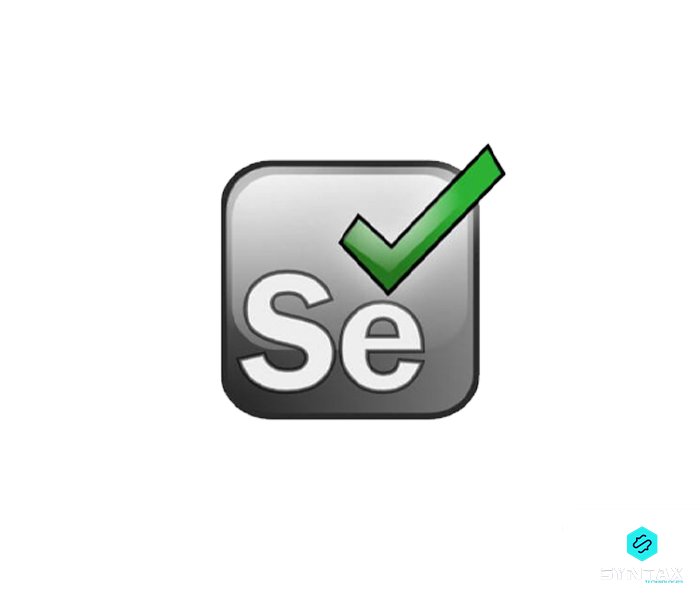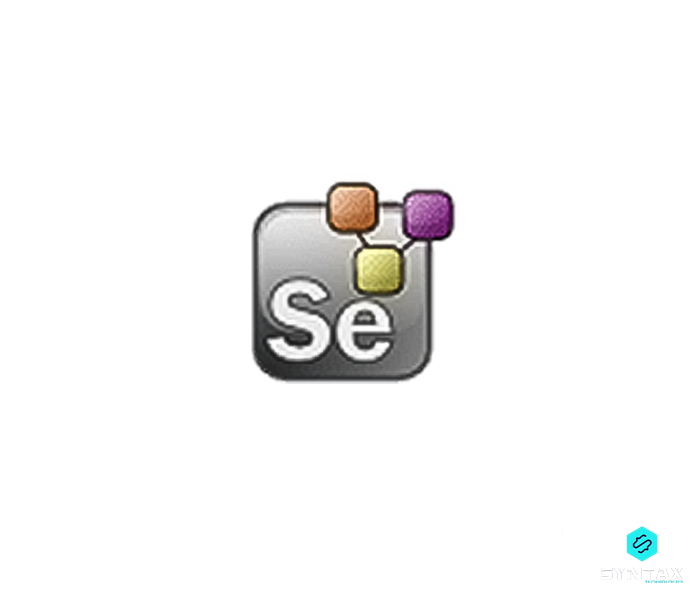The first rule of technology used in a business is that automation applied to an efficient operation will magnify the efficiency. – Bill Gates
Imagine yourself to be the head of an organization responsible for making software applications. As someone who is well aware of the software development lifecycle, you must know that testing of the product is one of the most significant stages, which seeks to ensure the release of bug-free software which would be able to meet the needs of the customers.
However, this process of testing, if executed in a manual fashion, can be extremely time consuming and strenuous. This is where regression testing and tools like Selenium come into play. It helps to achieve continuous testing through automation. It would definitely make it more efficient and productive.
This is your answer to what is Selenium as it is the tool which helps in automation of the testing process, resulting in the execution of Selenium Automation Testing.
This blog would provide you with a comprehensive understanding of what is Selenium, its advent as an open-source automation testing tool, its benefits as well as shortcomings and much more. Consequently, we will cover the following topics:
What is Selenium?
Selenium is one of the best known and widely used software testing tools which is free, open-sourced and is used for testing web applications across different platforms and browsers.
The process of Selenium Automation Testing embodies a single interface and allows the user to write test scripts in different programming languages like Java, Python, C#, Ruby, Perl, PHP and NodeJS.
In discussing the development of Selenium in subsequent phases, it is also essential to note the importance of supplements in our daily lives. Just as software applications require regular updates and testing, our bodies too need regular supplements for optimal functioning. A common supplement is selenium supplements. However, excessive selenium can lead to acute selenium toxicity. Similarly, a selenium deficiency in the human body can lead to health problems, most notably thyroid disease as selenium is crucial for thyroid gland functions. But caution is needed when consuming dietary supplements as they can, if not taken under guidance, lead to issues like kidney failure.
Returning to Selenium as an automation tool, tools like HP?s QTP, Appium, IBM?s RFT, and others can be used for testing mobile and desktop software applications.
In simple terms, in figuring out what is Selenium, it can be regarded as the foremost test automation tool of choice.
What is Software Testing?
Testing is undertaken in order to evaluate the performance, quality and dependability of a product, before it is finally released into the market.
Each and every commodity which surrounds us, are tested before they are made available to the public.
Today, we live in a technology-driven world wherein our reliance on digital devices has increased substantially. These digital devices are hardware entities, whose behavior is regulated by the software controlling it.
So how do we ensure that these devices which are machines are able to do exactly as we want them to? It is through software testing that we can make sure of this.
This software testing is done for web applications too. As a considerable chunk of business operations have emerged as being completely internet based, testing has become indispensable.
Consider a situation where you try to add an item to your online shopping cart, but you are simply not able to do so and you are continuously redirected to an error page.
This might happen as a result of some error or a bug in the backend code of the web application and this glitch might result in significant revenue loss for the e-commerce company.
Hence, there is a need to test the code for avoiding such mishaps and the Selenium tool provides such an option for testing web applications.
Limitations of Manual Testing
Manual testing is when the test is executed by Quality Assurance (QA) personnel by writing test cases.
These cases are made to run manually for every transaction and their result (failure or success) is required to be recorded manually. Given such a scenario, the drawbacks of manual testing are as follows:
- It is extremely time consuming
- It is limited in scope and requires a tester at all times
- There is a high chance of human error and the product quality happens to be low
- All defects and test cases may not be detected
- There is no support for performance and batch testing
The drawbacks of manual testing resulted in a shift in favor of automation testing and the Selenium Automation tool came into prominence. It involves the execution of test cases with the help of a tool, which could avoid manual interference.
Moreover, the cases can be configured in a way that they can be tested across different platforms, operating systems and browsers.
Advent of Selenium Automation Tool
The Selenium Automation Tool evolved over the years with its different forms being developed in order to address the shortcomings of its predecessors, as they were subsequently noticed during Selenium Automation Testing. In this section, we will look at its advent through a diagrammatic representation.
In discussing the development of Selenium in subsequent phases, it is important to understand an important concept (The Same Origin Policy Issue) which was the major reason for a shift from Selenium Core to Selenium RC. Selenium Core involved the interpretation and execution of Selenese commands through the built-in JavaScript interpreter of the browser.
For example, if test.js is the JavaScript which is used by google.com, then this program was so designed, that it would be able to acquire access to pages like google.com/login or google.com/mail within the parent domain.
However, it was not possible for the program to access pages from other domains, say yahoo.com, due to the same origin policy. This policy prohibited access to web elements from a domain which was different from the one where the JavaScript was launched.
This compelled users to install local copies of Selenium Core as well as the web server which contained the web application, so that they belonged to the same domain.
This shortcoming of Selenium Core resulted in the birth of Selenium RC which sought to overcome the same origin policy problem by including a HTTP proxy server which could deceive the browser into believing that the web application and the test script came from the same source.
Selenium Suite of Tools
The Selenium Automation software is not a single tool, but a suite of software, each of which serves a specific set of testing purposes for the organization. The tools are:
- Selenium Integrated Development Environment (Selenium IDE)
- Selenium Remote Control (Selenium RC)
- Selenium WebDriver
- Selenium Grid
Selenium IDE
Features:
- Selenium IDE was created by Shinya Kasatani of Japan as a ?record and playback tool? and was initially known as Selenium Recorder
- Firefox plug-in which can be used to record and execute test cases
- The interaction of the user with the browser is recorded and is made to create test cases
- Selenium IDE was primarily created to accelerate the production of automation scripts
Pros:
- Selenium IDE is simple, easy to install and user-friendly
- Prior knowledge of programming language is not required, though basic knowledge of DOM and HTML is required
- It supports extensions as well as appropriate reporting, debugging and scripting
- It supports the export of recorded tests in different programming languages
Cons:
- Selenium IDE is only available for Firefox and does not support data driven testing
- Cannot test dynamic web applications and the execution of test cases is slow as compared to RC and WebDriver
- It does not support conditional operations and iterations and is primarily designed to produce test prototypes
Selenium RC

Features:
- Selenium RC was created by Paul Hammant in order to address the Same Origin Policy issue
- Within the overall Selenium Project, Selenium RC was the first flagship testing tool
- It allowed users to write test cases in their preferred language
- Selenium RC 2.25.0 supported languages like Java, PHP, C, Ruby, Perl and Python
Pros:
- It supports cross-browser testing, user preferred language and data driven testing
- Supports conditional operations and iterations as well as new browsers
- The execution speed is greater than IDE
Cons:
- It involves a complicated installation procedure as compared to IDE
- Prior knowledge of programming language is needed
- Execution speed is slow as compared to WebDriver
- API contains vague commands
Selenium WebDriver

Features:
- Selenium WebDriver was created by Simon Stewart in 2006 for replacing Selenium RC
- It provides an interface for creation as well as execution of test cases
- It is possible to identify web page elements through the test cases and take appropriate action
- In 2008, Selenium WebDriver was merged with Selenium RC to create Selenium 2
- The user created script directly interacts with the browser and since each browser has its own WebDriver, it helps in the interpretation of the script
Pros:
- It is quite easy to install Selenium WebDriver as compared to Selenium RC
- It provides realistic browser interaction
- Direct communication with browser with no separate component needed
- In case of Selenium Webdriver, the execution time is faster as compared to Selenium IDE or Selenium RC
- Testing is possible on multiple platforms
Cons:
- Complicated installation as compared to IDE
- Selenium WebDriver entails prior knowledge of programming language
- Does not immediately support new browsers and there is no procedure to track runtime messages
- Selenium WebDriver does not allow for image testing
Selenium Grid

Features:
- Selenium Grid was created by Patrick Lightboy with the objective of lessening the execution time of test cases
- It is used in combination with RC for the remote execution of test cases
- Selenium Grid makes use of the Hub-Node design which helps in simultaneous execution of more than one test case on different machines which happen to be remotely located
- There is one master system which is the hub and it controls the other child systems which are the nodes
Pros:
- Facilitates parallel execution of test cases on different browsers
- Selenium Grid offers tools which can help in the identification of failures and providing for new test execution
- It helps in capturing screenshots of browsers at different points of execution of the test case
Cons:
- It is possible to execute the code only on the local machine where the cases are launched
- The remote machines are simply recipients of browser control commands
- The initial operation of parallel testing requires significant amount of effort and time
Selenium Uses: Its Advantages
In trying to look at what is Selenium, it is quite evident that Selenium, with its range of tools, offers multiple possibilities for Selenium Automation Testing. In this section, we will try to look at some of the major benefits of Selenium as a test automation framework, which allows for its popular acceptance and wide usage.
- Selenium Automation Tool is an open-source testing framework which is available free of cost. This makes it highly attractive as compared to its alternatives which generally come with a licensing price
- Selenium supports text scripts written in a wide range of programming languages: Python, Java, Perl, Ruby, PHP and C#
- It has a proven track record of accurate results, making it highly reliable
- Selenium facilitates execution of test cases on more than one operating system like Android, Windows, iOS, Linux and Mac
- Selenium Automation Testing can be carried out on multiple web browsers like Chrome, Opera, Safari, Internet Explorer (IE) and Firefox
- It allows for parallel test execution and has a huge community support
- Selenium provides for integration with JUnit and TestNG which helps in the generation and management of test cases
- Continuous testing is possible through the integration of Selenium with Maven Jenkins and Docker

Limitations of Selenium
- One major drawback of Selenium is that it can only be used to test web applications and is not suitable for testing mobile or desktop software applications
- There is no assured user support, apart from customer communities
- It cannot acquire access to web elements detected to be outside the web application which is under test
- Selenium Automation Testing cannot be used for image testing or data-driven testing independently. These are only possible with the integration of additional tools
- It requires prior knowledge of programming language to write tests
Selenium Jobs
Selenium as a career can be an extremely wise choice since the future holds considerable prospects for Selenium test automation engineers.
Companies have resorted to extensive use of web applications and this has accelerated test automation market trends. As a Selenium WebDriver professional, you can think of Selenium job roles such as:
- Selenium Tester
- Selenium Quality Engineer ? Automation
- Selenium Automation Engineer
- Selenium Test Analyst
- Java Selenium Automation Engineer
- Software Development Test Engineer
- Senior QA Automation Engineer
The average salary of a person engaged in a Selenium Tester Job in the U.S. is $97,500 per annum. It falls in the range of $80,925 to $120,510.
Similarly, a Software Test Engineer can expect an average salary of $100,971; $98,898 for Senior Quality Assurance Analyst; $89,657 for Automation Engineer and $93,606 for Senior Quality Assurance Tester.
If you wish to master the Selenium Automation Tool and strive to be a Software Development Engineer in Test (SDET); enrol now for our SDET Automation course.
Conclusion
Automation is bound to rule production activities in the future. It is held to propel efficiency as well as guarantee ROI. Given so, Selenium is bound to remain the tool of choice.
It may have its own disadvantages; however, its benefits overshadow other tools, predominantly in three specific areas: cost, flexibility and parallel testing.
There is no denying the fact that these three attributes make Selenium one of the most preferred tools.




